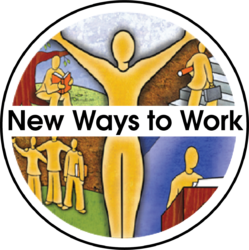Foster Youth Transition
Without strong role models or a stable home life, youth in foster care face daunting challenges as they transition to adult life. It is critical to engage them in effective career preparation while they are still in care, starting at very early ages. Child Welfare needs partners in the education and workforce communities to help focus on preparing youth for entry into the workforce – and the world.
Examples of Our Work
More Of Our Related Work
Below you’ll find a detailed list of our work with foster youth serving systems and programming.
Foster Youth Transition
Design and Implementation of the Foster Youth-Mentored Internship Project
Focus Areas: Foster Youth Transitions, Internships and Career Mentoring
Workforce Professionals Training Institute: Supporting the design and implementation of an eight agency collaborative providing subsidized internships and career mentoring to 160 – 200 older youth in care.
As an extension of the Youth Transition Action Team initiative and a series of statewide meetings focused on improving the career trajectories of transitioning foster youth, New Ways delivered the Youth at the Crossroads convening. This two-day conference, held May 21 and 22, 2012 in Los Angeles, was designed and facilitated by New Ways to Work and sponsored by the city and county of Los Angeles Workforce Investment Boards, the San Diego Workforce Partnership, the Riverside County Workforce Investment Board, and the city of Los Angeles Community Development Department. The primary purpose of the meeting was to encourage departments and agencies to work together and leverage each others’ services to better assist youth who choose to stay in foster care beyond the age of 18 under the Foster Connections Act. Two hundred and seventy attendees representing counties across the state – with representation spanning from Sacramento to the Bay Area to San Diego — gathered to focus on the implementation of extended foster care in California. Child welfare and workforce agencies throughout California met to honestly evaluate current practices and uncover ways to move forward with a new outlook on effectively serving foster youth, especially focused on older youth in care.
The planning, preparation, design, development and execution of all conference details, speakers, content, and participant recruitment was led, facilitated, and conducted by New Ways to Work, working closely with a sub-committee of the LA WIB’s Youth Council and an implementation team of staff and leadership. New Ways is now engaged in working with the partners to design and develop resources to support an ongoing capacity-building infrastructure in the county, and to implement key policy recommendations uncovered at the meeting at the local, state and national levels.
In partnership with Casey Family Programs, New Ways supported cross-disciplinary teams in counties across California in their efforts to create a comprehensive, integrated, and sequenced set of services and support to ensure that foster youth will be prepared to achieve success as adults. Teams composed of representatives from child welfare, workforce, education, probation, youth, and others bring together and leverage the approaches, strategies, and resources of multiple efforts related to successful youth transition. Counties focused on developing and implementing strategies to improve youth outcomes in education, employment, and permanence for transitioning foster youth.
Through a grant from the San Francisco Foundation, New Ways worked with county teams in the San Francisco Bay Area including county Office of Education staff, district-level Career/Technical Education leaders, social workers, Independent Living Skills Program staff, and others from Alameda, Contra Costa, Marin, San Francisco, and San Mateo counties to improve foster youth access to career development opportunities in area high schools.
Through a grant from the Jewish Community Foundation of Los Angeles, New Ways, in partnership with the LA YTAT, assisted 100 foster youth in connecting their 2009 summer jobs experience to their career and educational goals as part of Foster Youth Summer Jobs Plus.
California Independent Living Program Transformation Breakthrough Series Collaborative. This BSC assisted nine California county teams in putting the new ILP vision of Permanence, Education, and Employment for transitioning foster youth into action. This BSC was sponsored by the California Child Welfare Co-Investment Partnership and was coordinated and implemented by New Ways to Work and the Child & Family Policy Institute of California. Counties selected to participate in this 18-month collaborative devised and tested approaches to improve ILP services in order to make rapid changes in California’s ILP system.
